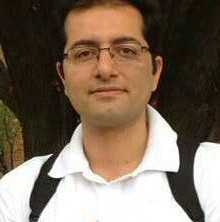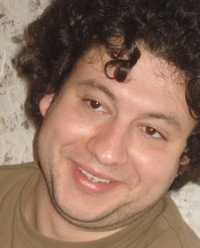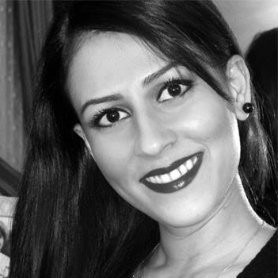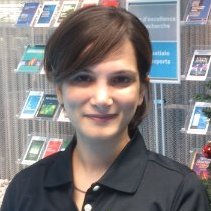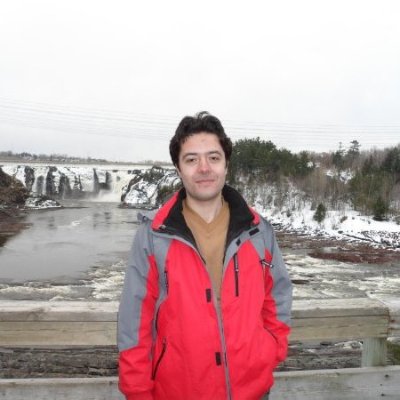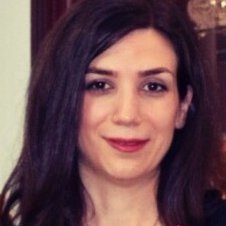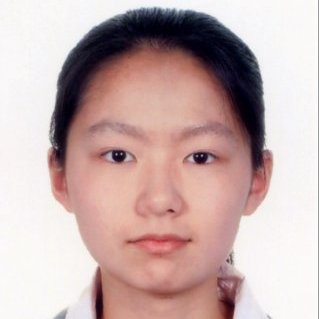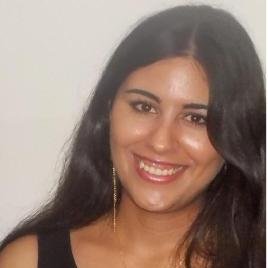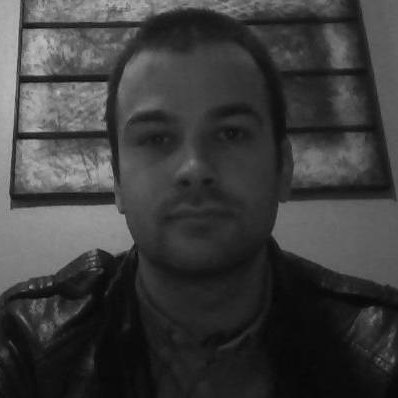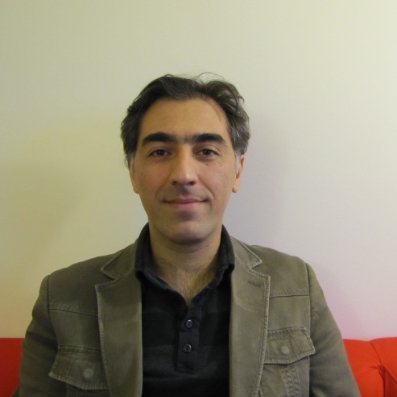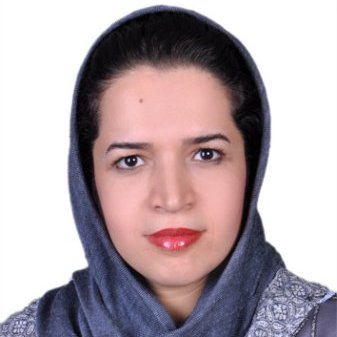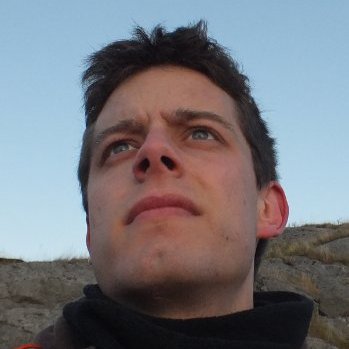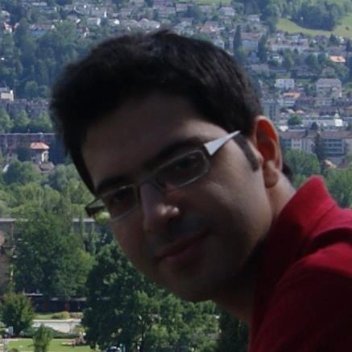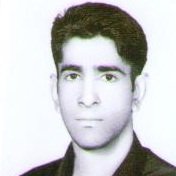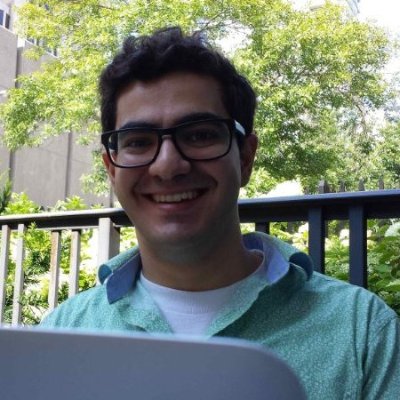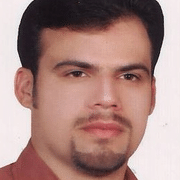Current Students
Mouloud Belbahri (with Alejandro Murua), Ph.D. (STAT), fall 2015-
Mahan Balalpour, M.Eng. (IND), summer 2015-
You Are Applicant
For which school should I apply? If you want to work under my supervision, you must apply for Ecole Polytechnique de Montreal through the
CERC Data Science website.
What is the difference between graduate programs? We have four different graduate programs at Ecole Polytechnique. DESS, Course Masters, Research Masters, and PhD.
DESS, is a 30 credits program (all course) and requirement is an undergrad with GPA at least 2.5 out of 4.
Course Masters is 45 credits program (30 course + 15 project) and the requirement is an undergrad with GPA at least 3 out of 4.
Research Masters is 45 credits program (15 course + 30 thesis) and the requirement is an undergrad with GPA at least 3 out of 4.
PhD is 85 credits program (15 course + 70 thesis) and the requirement is a masters with GPA at least 3.2 out of 4. I only accept students in Research Masters, and PhD programs.
How can I know more details about the programs offered at poly? Check the most recent list from
HERE.
Should I fill the application form in French or English? If you are applying for DESS or Course Masters, fill the application form in French. If you are applying for
Research Masters or PhD, fill the application form in English.
Do you have application deadlines? Yes! see HERE.
Can I take courses out of Poly? Yes! but not more than half of your total credits in DESS, Course Masters, and Research Masters. If you are a PhD student there is no restriction!
No course is offered at polytechnique officially in English.
Is it possible that I become a graduate student without knowing French? Yes, but we expect that you learn some French during your studies.
French skill is more serious for PhD students as we expect they help us with teaching.
Life at poly is in French you will feel isolated if you do not know French!
How can I find the list of graduate courses at Poly? See for instance math courses
HERE.
The one tagged BA are undergrad courses and ES are graduate courses. Click on the other codes like INF or ELE to see courses offered in other departments.
What graduate courses are offered out of poly? See the course list of ISM.
How can I register for courses out of poly? See CREPUQ.
Can I pass undergrad courses in a graduate program? Yes! but its grade won't be counted in your GPA.
What is the minimum GPA to remain in a graduate program? The minimum grade is 3 out of 4. The GPA is calculated after passing 9 credits.
Any semester that your GPA is less than 3, you are kicked out of the graduate program. GPA must remain more than 3 out of 4 during your whole study.
You Are Admitted
Here you find the list of the OFFICIAL FORMS, in .doc or .pdf. The graduate forms includes the English version of the form as well. The first form to fill after you register is your Study Plan (Plan d'etude).
In BOTTIN you find the list of all staff, technicians, directors, professors, research associates, etc plus their phone number and their office number.
POLYSTAT LIST
is a google mailing list where I distribute useful information tageting my graduate sudents. I suggest you to become a member of this google group with your google account.
If you register without a google mail, you loose your access to the web history.
POLYSTAT BLOG
is a blog that my gradute studdents and I regularly write on.
There, we try to practice our writing for amateur audiance.
Our team meets regulary every week. The meeting includes If you subscribe in the google group you will receive the updates.
I expect that research students participate
If you are PhD, be careful with your first year timing. You have maximum a year to pass 15 credits and then you must pass your qualifying exam
in less than 4 semesters. Each year is 3 semesters: the fall, the winter, and the summer. Often no graduate course is offered during the summer.
You have to pass several obligatory workshops at polytechnique before your qualifying exam as well. Because of the tight timing, it is strongly recommended that you start your study in the fall.
Here is the list of few interesting Machine Learning courses. At Poly: MTH6312, IND6212,
INF8225. At UdeM IFT6266. At McGill COMP652,
COMP598.
As a graduate student you are supposed to participate in technical seminars as many as you can. In Montreal we have
many talks, workshops, and other means to learn for free and meet important scientific people in person.
CRM seminar,
McGill's seminar,
and
GERAD seminar, I suggest you to follow regularly. If you are using Google Calendar, you can add my events calendar directly to follow
the updates by clicking HERE. CIRRELT seminars calendar is provided by Mehdi Mahnam (a CIRRELT researcher), add thsese seminars to your google calendar by clicking HERE, Vahid Zeighami (a GERAD researcher) is managing the google calendar for GERAD seminars, add these seminars by clicking HERE.
I suggest you to improve your academic writing, in English, before starting your thesis writing.
Check some of these courses offered at Concordia. Such courses you can get out of program (meaning you
only have to pass the course and your grade won't be counted in your GPA).
I suggest you to improve your French while you study at Poly if you are not French native. There are several courses that I suggest you to take at UdeM out of your program (meaning you
only have to pass the course and your grade won't be counted in your GPA) in the following order, FRS 1211T (French conversation), FRS 1222T (French writing), FRS 1110 (French writing and conversation). Fore more information check the French course list at UdeM. Be aware that you cannot register in the course without a placement test, being taken early semester. Do not miss the placement test!
You have to learn at least R and Python programming languages. C and C++ coding is an advantage. If you never heard about R and its capabilities, read some introductory articles, like THIS.
Check Python-R cheat sheet HERE.
You need to work on Linux. I have a computing server CYRUS
that you can run your long computing jobs there. This CentOS Linux server supports SSH and FTP services currently
running over 32 parallel processors each with 2GB RAM.
You need to learn how to write readable codes. See R Style Guide
and Python Style Guide for instance.
A Guardian Article that gives you golden advice about effective work habits with your supervisor.
Follow these twenty rules for good graphics in any plot you produce.
Rules for Scientific Presentation
Put yourself in the audiance shoes before making your presentation file. Always ask why somebody must sit and listen to you; come up with at least 3 reasons and emphasize on these reasons throughout your presentation.
Motivate your presentation with an interesting problem defined over real data.
Always use PDF presentation file. PPT files are platform dependent. Latex presentation using powerdot package or beamer package is preferrable.
Make a title page with your name first, followed by your collaborators. Use the logo of research supports (companies) and the logo of your university.
Cut everything which is not directly related to the subject, even if you spent a lot of time of your research on it.
No more than 5 lines per slide.
Start with Graphs not formulas, not tables, not descriptions.
Manage presentation time and leave at some time for questions.
Balance your presentation for everybody. 1/3 for who do not have training in the domain, 1/3 for who have basic training, 1/3 for experts.
Any numerical result must come with standard errors.
Put page number in your presentation.
Spell check.
Do color management. Use high contrast colors, the video projector might be old. Think about color blind people: Blue-Orange-Green, not Blue-Red-Green.
Do not use tables with dimension more than 5X5, put graphs instead.
In tables highlight key digits with another color or in bold.
Write big enough on the black board, if questions are asked.
After answering a question, ask if you answered the audiance's questions properly.
Remeber the Bioemtrika parentheses steps ( [ { ( [ { ( ) } ] ) } ] ) in your formulas.
Supervised Theses
Farnoush Farhadi (2017), Learning Activation Function in Deep Neural Networks [PDF]. Farnoush shows how to learn activation function in a deep network.
Mina Mirshahi (2017), A Study on Shape Clustering and Odor Detection [PDF]. Mina focuses on supervised and unsupervised learning methods. In unsupervised learning, she shows how to cluster shapes using their low resolution images. In supervised learning, she shows how to predict odors using their chemical composition.
Sajjad Ghaemi (2017), Forestogram: Biclustring Visualization Framework with Application in Public Transport and Bioinformatics [PDF]. Sajjad generalizes dendrogram to forestogram .
Shaima Tilouche (2017), Multidimensional Control Charts and Parallel Coordinates [PDF]. Shaima shows how to visualize multidimensional control charts appropriately.
Shu Fan (2017), Unsupervised Learning Based on Markov Chain Modeling of Hot Water Demand Process [PDF]. Shu shows how to cluster non-homogenious Poisson processes, by approximating them with piece-wise homogenious Poisson processes.
Geoffroy Mouret (2014), No-Mean Clustering Algorithm [PDF]. Geoffroy found a new extention of the famous k-means algorithm through Bayesian clustering.
Amir-Hosein Homaie-Shandizi (2014), Prediction of Pilot's Absence in an Airline Company [PDF]. Amir produced a faster version of
random forest to fit over large data sets. He implemented his algorithm in R and moreover developed a GUI through Shiny interface to apply his method as a management disruption tool.
The airline company who ordered this project can reduce its costs by installing his software in order of million dollars every year.
Lafteris Samartzis (2005), Survival and Censored Data [PDF]. Lafteris explored how one can improve a survival curve estimation through imputation of
censored observations.
Former Students
Elham Karimi (with Martin Trepanier), M.Sc. (MTH), fall 2018-
Damoon Robatian (with Francois Soumis and Masoud Asgharian), Ph.D. (MTH), winter 2015-
Niloofar Ayati (with Andrea Lodi and Didier Chetelat), M.Sc. (MTH), fall 2016-
Farnoush Farhadi (with Andrea Lodi), M.Sc. (IND), winter 2015-fall 2017
Sajjad Ghaemi (with Bruno Agard), Ph.D. (MTH), winter 2014-fall 2017
Mina Mirshahi (with Masoud Asgharian), Ph.D. (MTH), fall 2013-summer 2017.
Shu Fan (with Roland Malhame), M.Sc (ELE), fall 2015-winter 2017.
Shaima Tilouche (with Samuel Bassetto), Ph.D. (IND), fall 2013-fall 2017.
Mahdi Zolnouri, B.Sc. student of Computer Engineering, summer 2015.
Alexandre Arsenault, B.Sc. student of Computer Engineering, summer 2014, summer 2015.
Babak Khorramabadi Zad, B.Sc. student of Industrial Engineering, summer 2014, summer 2015.
Zohreh Javanshiri, Ph.D. research trainee, summer 2014.
Geoffroy Mouret, M.Sc., 2012-2014, after training employed as data analyst at UbiSoft.
Javier Florian, D.E.S.S. 2012-2014, after training employed as product developmer at Spectra Premium (Montreal).
Amir-Hosein Homaie-Shandizi, M.Sc., 2011-2014, after training employed as
advanced analytics manager at Air Canada (Toronto).
Sasan Raeissianzadeh, M.Sc. research trainee, summer 2013. After training employed as forecasting development specialist at Kronos.
Mostafa Ghannad-Rezaie, Ph.D. research trainee, winter 2012, after became postdoctoral fellow at MIT.
Delphine Savignard, B.Sc. research trainee, summer 2012, after training admitted as graduate student of management in Gronoble (France).
Bahram Vakilian, M.Sc. research trainee, summer 2012, after training admitted as graduate student at Ecole Polytechnique de Montreal.
Reza Drikvandi, Ph.D. research trainee, fall 2011, after training employed as postdoctoral fellow at Katholic Leuven.
Maryam Rais, B.Sc. research trainee, summer 2011, after training admitted as graduate student at HEC Paris (France).
Namdar Homyounfar, B.Sc. research trainee, after training admitted as graduate student of Statistics and Machine Learning at University of Toronto.
Mostafa Davtalab-Olyaie, Ph.D. research trainee, 2012, after training became faculty at Kashan University (Iran).
Arpit Chaudhary, B.Sc. research trainee, summer 2007.
Lafteris Samartzis, M.Sc. research trainee, winter 2006, no track.

